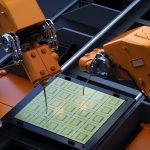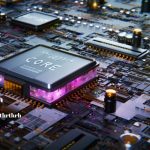The landscape of quantum computing faced a significant statement from Nvidia CEO Jensen Huang during the 2025 Consumer Electronics Show in Las Vegas. His projection suggests that commercially useful quantum computers are still several decades away, a declaration that has stirred debate and concern within the industry. This perspective highlights the ongoing challenges in advancing quantum technology to a level where it can be widely utilized across various sectors.
Quantum computing has consistently been marketed as the next frontier in computational power. Recent advancements have sparked optimism, yet Huang’s remarks serve as a reality check, emphasizing the substantial hurdles that remain. This sentiment contrasts with earlier, more optimistic forecasts, underscoring a cautious approach towards the timeline of quantum breakthroughs.
The Impact of Huang’s Statement
“Very useful quantum computers are still a few decades away,” Jensen Huang stated at CES 2025.
This declaration caused immediate repercussions in the market, notably leading to a sharp decline in the shares of prominent quantum computing firms such as Rigetti Computing, D-Wave Quantum, and IonQ. Investors responded swiftly, reflecting uncertainty about the near-term prospects of quantum technologies.
Defending Quantum Advancements
“Jensen Huang has a misunderstanding of quantum. He is ‘dead wrong’ about D-Wave,” noted Alan Baratz, CEO of D-Wave Quantum.
In response to Huang’s skepticism, leaders within the quantum sector have vigorously defended their progress and methodologies. D-Wave, for example, emphasizes its unique approach using quantum annealing, which has demonstrated tangible benefits in areas like materials simulation and logistics optimization. These rebuttals aim to reassure stakeholders of the industry’s potential despite the challenges highlighted by Huang.
Future Prospects and Industry Insights
The quantum computing industry continues to push forward, with companies like Phasecraft and Zapata Computing making strides in algorithm development tailored to current hardware capabilities. Educational institutions are also contributing, focusing on overcoming technical barriers such as qubit coherence and error rates. Despite Huang’s cautious outlook, the sector remains optimistic about achieving significant milestones within the next few decades.
The discourse surrounding quantum computing’s future is nuanced, balancing optimism with pragmatic assessments of current technological limitations. As the industry navigates these complexities, the interplay between visionary leadership and on-the-ground innovations will shape the trajectory of quantum advancements.
Nvidia’s perspective injects a dose of realism into the often-hyped narrative of quantum computing. By acknowledging the substantial progress yet to be made, industry players are reminded of the importance of sustained investment and research. This balanced view fosters a more strategic approach to developing quantum technologies, ensuring that expectations are aligned with achievable outcomes.
As quantum computing evolves, its integration with artificial intelligence and other emerging technologies could unlock new possibilities. Practical applications, even within the constraints of current limitations, continue to emerge, demonstrating the technology’s transformative potential. Therefore, the industry’s path forward involves not only overcoming inherent challenges but also leveraging existing strengths to drive innovation.










